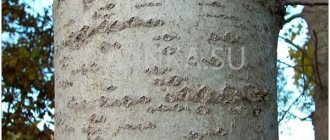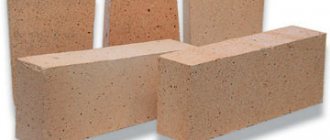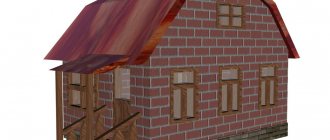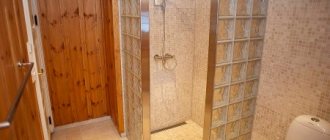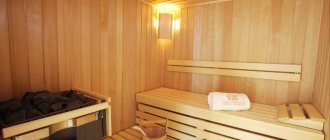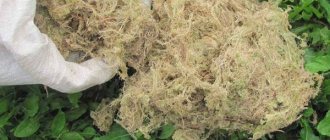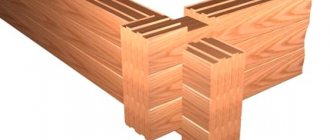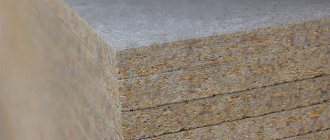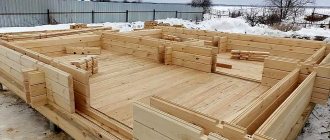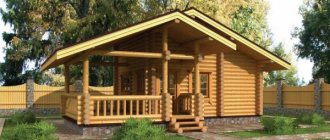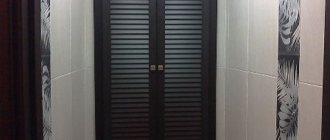Types and form of release
There are four main types of perlite for thermal insulation. The material differs in the shape of the inlet and the method of application. Each type of insulation has its own advantages and technical characteristics.
Backfill insulation
The material is perlite sand, which is used to fill voids between the wall and the finish or interlayers in brickwork. This insulation allows you to completely fill all the cracks and openings, providing reliable thermal insulation.
Perlite sand is often used to level floors. It is quite light and does not create any additional load on the structures. Therefore, it can be used for any buildings. Insulation with fine-grained bulk perlite can reduce the level of heat loss by more than 40 percent.
Plates
Perlite thermal insulation material in the form of slabs is one of the most popular construction products. This type of insulation is convenient for the construction of various large structures.
To give the material the necessary qualities in the manufacture of slabs, different types of binders are used - cement, clay, liquid glass, lime, bitumen or polymers. Formed perlite is mainly used for internal insulation. This is due to the high hygroscopicity of the material. For external insulation, reliable waterproofing is required.
Perlite slabs
Perlite concrete slabs are especially popular. In addition to expanded perlite, they contain sand, water and Portland cement. The strength of the material depends on the ratio of the components. Ready-made perlite concrete blocks are large in size and light in weight. One product can replace three bricks. The use of such material allows not only to ensure structural strength, but also to reduce heat losses.
Roofing models
Bitumen-perlite is widely used for insulation and waterproofing of roofs. This roofing material allows you to create a reliable and fairly durable protective coating. Its thermal conductivity is only 0.067 Watt/m°C.
Bitumen perlite has high technical characteristics. Due to its flexibility, the material can be easily applied in layers to any roof structure. Perlite insulation based on bitumen is a non-flammable and safe to use thermal insulation product with high wear resistance.
Dry materials
Perlite is widely used in dry construction mixtures. It is added to improve the characteristics of gypsum, lime or cement compositions. This material is widely used in the preparation of grout for joints, putty and adhesive solutions. Quite often, dry self-leveling perlite mixtures are used when arranging floors.
Perlite plaster is in particular demand. Its technical characteristics far exceed conventional surface finishing compounds. Regardless of the degree of grain, perlite plaster is lightweight, which is especially appreciated when arranging facades.
The material is fire-resistant, does not rot and tolerates the lowest air temperatures well. Perlite plaster has high adhesion and is suitable for all types of surfaces. With the help of such finishing, you can create high-quality sound insulation and retain heat inside the room for a long time.
Perlite insulation technology
You can provide good thermal insulation using perlite yourself. The technology for insulation with such bulk material is quite simple.
Wall insulation
Perlite is backfilled for brick and block structures. Preparation for insulation is carried out at the stage of wall construction.
The process of filling the thermal insulation material occurs as follows:
- all openings and holes through which perlite sand can spill out are sealed;
- the material is poured into the space between the wall masonry parts;
- The insulation is lightly compacted by tapping.
Wall insulation with perlite
Bulk material can also be used to backfill between masonry and interior finishing. For this method of insulation, only dry perlite is suitable.
Floor insulation
For thermal insulation of floors with a monolithic hard coating, perlite sand with a grain size of no more than 6 millimeters is used. The process of laying the material is quite simple:
- pour perlite sand from bags onto the base of the floor;
- with the help of special slats, bulk material is evenly distributed over the surface;
- all pipelines are immersed in a uniformly laid composition;
- The floor surface is covered with slabs.
To insulate floors covered with wood, compaction of the material is not required. Perlite sand is simply poured into the openings between the wooden elements of the floor base. Thermal insulation is reinforced with fiberboard or fiberglass. Sometimes cement is used for these purposes. The entire insulated surface is sprinkled with a dry solution, and water is sprayed on top.
Perlite is a modern thermal insulation material with unique properties. With its help, you can provide good sound insulation and reliably insulate the structure of the house.
Perlite - what is it and what are its properties. Perlite (a word borrowed from French) is a rock of volcanic origin. When magma reaches the surface due to its rapid cooling, volcanic glass (obsidian) is formed, and as a result of the passage of groundwater through it, perlite (obsidian hydroxide) is obtained.
This natural material is divided into two groups: perlite, which contains up to 1% water, and obsidian hydroxide, in which the amount of water can reach up to 4÷6%. In addition to water, perlite contains oxides of aluminum, potassium, sodium, iron, calcium; silicon dioxide and other chemical elements. Volcanic perlite is a porous material that can be black, green, red-brown, brown or white in color. According to their texture, perlite rocks are divided into: massive, banded, pumice-like and brecciated. If perlite contains obsidian, it is called obsidian; if feldspar, then spherulitic; and if the material is homogeneous in composition, then it is called resin stone.
DIY insulation technology
The process of blowing in expanded perlite sand is not labor-intensive and takes little time. Seams and cracks on walls and cavities in blocks can be perfectly filled with perlite-based mortar, which can be easily made with your own hands by selecting the necessary materials.
Materials
In terms of thermal insulation properties, perlite sand, 30 mm thick, is equivalent to sand-lime brick, 200 mm thick, and mortars with the addition of volcanic sand are effective insulation.
The following are added as binding materials:
- liquid glass;
- cement;
- bitumen;
- clay, lime;
- gypsum.
A mixture of perlite and a binder is made in belt mixers at low speeds so as not to disturb the structure of the perlite grain.
From building mixtures you can press products of various shapes, make bricks and other necessary structures.
Sequence of work
Work on insulating the house begins with laying the foundation:
- the bases of strip foundations and basements are plastered with mixtures containing perlite chips and insulated with heat-insulating blocks;
- when constructing walls, perlite expanded sand is backfilled every 3-4 rows of masonry, compacting it;
- Next, a layer of plaster no more than 5 cm thick is applied to the walls.
The voids are filled based on the bulk density for each cubic meter - 70-100 kg of perlite component.
Upon completion of the construction of the walls, they are covered with ceiling slabs, all cracks are carefully sealed and the insulation of the ceiling begins:
- cover the slabs with cardboard or paper;
- pour expanded perlite sand 3 cm thick onto it and compact it;
- filled with cement.
We study all known varieties
There are only 4 forms of release of this heat insulator: backfill (it is also called sand), slabs (outside identical to extruded polystyrene), roofing models and dry repair mixtures. These varieties have certain properties that you need to know.
Backfill insulation
The first form factor of Perlite sand to appear is a loose heat insulator
. The main task of this material during the construction of houses is to soften the structure (it is lighter than a conventional cement-sand mixture) and increase its insulating qualities. In most cases, this layer is used for backfilling floors and interfloor layers. It is also often used to fill empty spaces in wall masonry. Less commonly, it is used in combination (or instead) with warm plaster.
The most functional and functional form is slabs
According to official statistics, about 60% of all perlite sand produced on earth is used to create insulation boards. They are obtained as a result of hydraulic pressing, as a result of which they are quite convenient to use. The binder differs depending on the individual type (bitumen, lime, polymer compounds, cement, liquid glass, etc.).
This category of materials has very high hygroscopicity. Due to this, it is mostly used for interior decoration. Still, when laying an additional waterproof layer, it can also be used for finishing on the outside. However, this is not very justified from an economic point of view.
Roofing models
From the name, it is clear that such analogues are used mainly for roofing. For this task, in other words, bitumen perlite is used. This kind of material provides an excellent opportunity to create a layer of insulation of various shapes, due to which it is sometimes used for buildings of original design.
Main! There is no need to heat it before applying this coating!
The average thermal conductivity standard for this variety is 0.067 W (m*C), which is considered the most ideal result. This indicator makes it possible to use this coating even in the north. It is also necessary to emphasize the non-flammability of this heat insulator, which ensures the overall safety of the building.
Dry repair mixtures based on Perlite sand
As a result of mixing cement and perlite, a very productive dry mixture for construction work is obtained. The solution is prepared very simply - it is very easy to add water (in other words, no additional additives, such as ASG or gypsum, are required). For the most part, this composition is used to fill cavities in brickwork, grout seams and cracks, and also create a layer of plaster with very high thermal insulation characteristics. At the same time, it makes it possible to easily straighten the surface.
Insulation - bulk perlite thermal insulation, segments, slabs, plaster
Advantages and disadvantages
Perlite has a round shape and a characteristic shine, which makes it quite similar to pearls. Using such material as insulation has many advantages:
environmental friendliness of the material; fire safety; resistance to sudden temperature changes, which is very important for external insulation; lightness of the material; lack of odor and toxicity; relatively low cost; durability.
What does perlite look like?
The material is resistant to aggressive compounds and is not subject to corrosion or rotting. Loose insulation does not attract insects and rodents and is able to tightly fill voids, which allows you to achieve a fairly high level of sound insulation.
The disadvantage of using perlite as insulation is often considered to be the formation of dust during installation, which can be harmful to health. But this problem can be solved with the help of protective equipment.
Main advantages
*
Perlite, like other materials, has its pros and cons. But despite the shortcomings, it is an integral part of any construction.
The following advantages of perlite as insulation can be highlighted:
- Lightness, which allows you to place it inside any frame structure without increasing its strength.
- Resistance to fairly sudden temperature changes allows it to be used outdoors in various weather conditions. Can withstand -220 to +900℃.
- Environmental safety, lack of toxicity in any operating conditions.
- It is not an allergen for the animal world or people.
- Resistant to most acid and alkaline compounds.
- Not subject to corrosive processes.
- Thanks to the density formed between the particles of the material during laying of the layers, a high level of sound insulation of the entire structure is achieved. Therefore, there is no need to use an additional layer of insulation of a different origin.
- Absolutely not subject to deformation from exposure to high temperatures at household levels. Ideal for installing indoor floor heating systems.
- Average price range in comparison with materials used for similar work.
- It is highly efficient, rational and ergonomic in its use.
It would be appropriate to note that it is inappropriate to use perlite in rooms with constantly increased humidity by more than 10% or in conditions of a consistently humid climate. It is not resistant to these influences.
When working with this material, you need to be aware that aluminosilicate dust is released during active handling. Very small particles of it can harm the human body if they get on the mucous membrane. Therefore, during the process of mechanical sawing of blocks and mixing the solution, it is necessary to use precautions and protect exposed areas of the body.
Perlite insulation
Insulation of coatings with slabs: mineral wool or perlite on bitumen mastic in one layer
LOCAL RESOURCE GIVEN GESN 12-01-013-03
| Name | Unit |
| Insulation of coatings with slabs: mineral wool or perlite on bitumen mastic in one layer | 100 m2 of insulated covering |
| Scope of work | |
| 01. Preparing the base. 02. Primer of the base. 03. Laying slabs on bitumen mastic. 04. Preparing the primer. |
PRICE VALUES
The price list shows the direct costs of the work for the period of March 2014
for the city of Moscow, which are calculated on the basis of
2014 standards with additions 1
by applying indices to the prices of the resources used.
2000
federal prices .
The following indices and hourly rates from the “Union of Cost Estimating Engineers” were used: Index to the cost of materials: 7.485
Index to the cost of machines:
11.643
Hourly rates used: The monthly wage at a given hourly rate is indicated in parentheses.
Hourly rate 1st category: 130.23 rubles. per hour ( 22,920
) rub.
per month. Hourly rate 2nd category: 141.21 rubles. per hour ( 24,853
) rub.
per month. Hourly rate 3rd category: 154.46 rubles. per hour ( 27,185
) rub.
per month. Hourly rate 4 categories: 174.34 rubles. per hour ( 30,684
) rub.
per month. Hourly rate 5th category: 200.84 rubles. per hour ( 35,348
) rub.
per month. Hourly rate 6th grade: 233.96 rubles. per hour ( 41,177
) rub. per month.
By clicking on this link, you can see this standard calculated in 2000 prices. The basis for applying the composition and consumption of materials, machines and labor costs are GESN-2001
LABOR COSTS
| № | Name | Unit Change | Labor costs |
| 1 | Labor costs of construction workers Grade 3.9 | person-hour | 45,54 |
| 2 | Labor costs for drivers (for reference, included in the price of the EV) | person-hour | 0,55 |
| Total labor costs for workers | person-hour | 45,54 | |
| Workers' compensation = 45.54 x 172.35 | Rub. | 7 848,91 | |
| Payroll for drivers = 124.27 (for calculating invoices and profits) | Rub. | 124,27 |
Work schedule. Automatic construction according to estimates.
OPERATION OF MACHINES AND MECHANISMS
| № | Cipher | Name | Unit Change | Consumption | St. unit.Rub. | TotalRub. |
| 1 | 020129 | Tower cranes when working on other types of construction 8 t | mach.-h | 0,35 | 1005,96 | 352,09 |
| 2 | 021141 | Truck-mounted cranes when working on other types of construction 10 t | mach.-h | 0,2 | 1303,9 | 260,78 |
| 3 | 121011 | Mobile bitumen boilers 400 l | mach.-h | 1,84 | 349,29 | 642,69 |
| 4 | 400001 | Flatbed vehicles, load capacity up to 5 tons | mach.-h | 0,28 | 1014,92 | 284,18 |
| Total | Rub. | 1 539,74 |
CONSUMPTION OF MATERIALS
| № | Cipher | Name | Unit Change | Consumption | St. unit.Rub. | TotalRub. |
| 1 | 101-0078 | Petroleum construction roofing bitumen grades BNK-45/190, BNK-45/180 | T | 0,025 | 11452,05 | 286,30 |
| 2 | 101-0322 | Kerosene for technical purposes grades KT-1, KT-2 | T | 0,058 | 19512,65 | 1 131,73 |
| 3 | 101-0594 | Hot bitumen roofing mastic | T | 0,201 | 25374,15 | 5 100,20 |
| 4 | 104-0004 | Mineral wool slabs with synthetic binder M-125 (GOST 9573-82) | m3 | 6,18 | 3967,05 | 24 516,37 |
| Total | Rub. | 31 034,61 |
TOTAL BY RESOURCES: 32,574.35 RUB.
TOTAL PRICE: RUB 40,423.26.
You can see this standard calculated in 2000 prices. by following this link
The price is compiled according to the standards of GESN-2001 as amended in 2014 with additions 1
in prices
of March 2014.
To determine intermediate and final price values, the DefSmeta program was used
Estimate for the construction of a house, renovation and decoration of apartments - DefSmeta
Rental
The program provides an assistant who will turn the preparation of estimates into a game.
Characteristics of Perlite sand in the form of sand
Important characteristics are also positive qualities
It is necessary to emphasize the main positive qualities that perlite sand
heat insulator:
- Light weight. Despite the fact that mountain and volcanic rocks act as the initial raw materials, Perlite sand turns out to be quite light (this occurs due to thermal processing). As a result, there is no need to build a particularly reliable frame.
- Very high temperature resistance. It will withstand temperature changes from -220 to +900 degrees. Thanks to this, it can be freely used for insulation from the outside, even in the extreme north.
Main! In this nuance, he wins over all his rivals. No other heat insulator can boast of a permissible amplitude of more than 1100 degrees.
- Environmentally friendly. Even when heated, this material does not emit any toxic substances or carcinogens.
- Chemical neutrality to most acids and alkalis. This eliminates the possibility of corrosion and other unpleasant formations. It is also necessary to note that it is completely hypoallergenic.
- High sound absorption properties, which are achieved due to low bulk density. As a result, when using this heat insulator, there is no need to lay an additional layer of sound insulation.
- Does not change its initial shape during heating. Due to this, Perlite sand is often used in underfloor heating systems.
- Greater efficiency. In general, stating the specifics presented above, we can emphasize the impressive efficiency of this material. Despite the fact that it is not in great demand (relative to Extruded Polystyrene and Mineral Wool), its use seems very sensible. At the same time, the price of this material is approximately in the range.
Where is similar material used?
Such an impressive list of good qualities predetermined the wide scope of use of this heat insulator:
- External plastering of buildings. This is where resistance to frost comes into play.
- Any internal work that is associated with equalizing and increasing thermal conductivity parameters.
- Finishing inside the roof.
- Thermal insulation of pipelines (also for hot water supply).
- Heated floor systems.
The above shows only much broader areas of construction. The substance itself, called Perlite sand, is used in medicine, metallurgy, energy, agriculture, oil refining and even the food industry.
Expanded perlite
Perlite, as a rock, is practically not used in construction. It acquires its unique properties only as a result of heat treatment, namely, heating at temperatures from 900 to 1100 degrees Celsius. At the same time, it swells, increases in size by 5–15 times and breaks up into small, round particles, which are called expanded perlite. Heat treatment is carried out in 1÷2 stages: it all depends on the amount of water in obsidian hydroxide. If its content is high, at the first stage, excess liquid is removed, keeping the material at temperatures of 300÷400˚C.
Foamed perlite is powder (particles less than 0.14 mm in size), sand (fraction size less than 5 mm) or crushed stone (granules 5÷20 mm in size). The density of sand is 50÷200 kg/mᶟ, and crushed stone is about 500 kg/mᶟ. The color varies from snow-white to grayish-white.
Due to its properties, expanded perlite is used in construction, the metallurgical industry, oil refining, the food industry and agriculture.
Insulation of walls with perlite video
Perlite is obtained by firing a volcanic mass that contains crystalline hydrate water. As a result, products are born that look like white foam granules up to 20 mm in length and up to 500 kg per cubic meter. In fact, this substance is chemically neutral. Perlite does not burn and can withstand heat up to +900 degrees Celsius. As for thermal conductivity, this value is 0.05 W/(m*K). Thanks to its improved performance properties, perlite is in demand today in many industrial sectors.
The United States began to use perlite most actively in construction. This material is used for thermal insulation of floors, roofs, chimneys and even swimming pools. In industry, it is used for thermal protection of melting furnaces of cryogenic devices.
Characteristics and properties of the material
Perlite is a rock of volcanic origin. Natural material itself has no particular value for construction. In appearance it resembles ordinary crushed stone. What makes perlite unique is its special heat treatment.
In order for the rock to have the necessary technical characteristics, it is heated to a temperature of 1100 degrees. Under the influence of high conditions, the pores of the material explode - swelling. As a result, perlite breaks down into many particles of different fractions.
Treated perlite has the following technical characteristics:
- fire resistance;
- bulk density (depending on the size of the material fractions) – from 45 to 500 kg/m3;
- thermal conductivity level – from 0.043 to 0.053 Watt/mK;
- ability to withstand temperatures from – 200 to 900 degrees;
- the porosity rate is 70 - 90 percent.
Expanded perlite is a lightweight material with good sound and heat insulation qualities. The finished construction product can have different fraction sizes - from 1 to 10 millimeters. Despite its high hygroscopicity, perlite is able to absorb and release moisture without changing its original characteristics.
What is the difference between perlite and vermiculite: characteristics and properties
Any field of activity requires careful selection of materials.
In construction and agricultural work, it is important to know the difference between perlite and vermiculite, so as not to make a mistake with the choice.
What is the difference between perlite and vermiculite: characteristics and properties To understand how perlite differs from vermiculite, it is necessary to study the properties and composition of these substances. They are widely used in construction, agricultural and gardening work.
Characteristics of perlite Expanded perlite is made from silicate volcanic rocks, which, when exposed to high temperatures, swell and disintegrate into granules of different sizes.
Agroperlite brand M-100
Expanded vermiculite VVT2
Sand 1-3K-301-401 fraction 0.1
Quartz sand fraction 0.4-0.8
How to insulate a house using perlite
Perlite is used as insulation in the form of sand (bulk insulation); component in thermal insulation products and dry ready-made building mixtures.
Perlite sand as insulation for walls
Perlite sand for arranging thermal insulation of a house is an excellent material with which you can not only effectively insulate a home (heat loss is reduced by 50%), but also significantly lighten the structure of the building.
We begin installing thermal insulation from foamed perlite after part of the load-bearing wall (internal) and external brickwork (4-5 rows) have already been erected. We pour coarse expanded perlite sand (with a granule size of about 6 mm), previously dust-free, into the gap between these two walls and compact it thoroughly (the volume should decrease by 10%). We fill the sand manually or using a sandblasting machine. We repeat this operation several times until the walls are completely erected. By the way, in terms of heat-saving properties, a perlite layer about 3 cm thick corresponds to a 25 cm thick brick wall. When building panel houses, we pour sand between the sheathing sheets (internal and external).
If you are insulating an old house with voids in the walls, then backfilling with sand can be done in two ways:
- carefully pull out several bricks from the wall and pour perlite through the resulting hole;
- drill a hole in the wall (diameter 30÷40 mm) and through it, using a special installation, inject heat-insulating material.
Perlite sand is a universal non-combustible building material that has a number of advantages:
- excellent sound, noise and heat insulation properties (and can be used to insulate walls made of any material);
- environmental friendliness;
- lightness (by weight);
- resistance to temperature changes;
- durability.
Advice! You should not use perlite sand, which is a very moisture-intensive material, as insulation in places with high humidity.
The only disadvantage of sand is that it is very dusty: therefore, it is recommended to slightly moisten it before use.
Floor insulation with perlite
For thermal insulation of floors, we use expanded perlite, which is poured onto the cement-sand base of the floor and leveled according to building regulations. The height of the thermal insulation layer of sand is the desired thickness plus 20% additional volume for shrinkage.
Important! The recommended minimum thickness of the perlite layer is at least 1 cm
We embed uneven areas and pipelines in a layer of bulk material, and lay slabs and flooring on top. If there is no basement under the house, then in order for moisture to accumulate and be removed, we place drainage pipes and absorbent pads under the perlite.
Another effective way to insulate a concrete floor can be to lay a kind of “pie”: we install a perlite screed between two layers of concrete. First, prepare a perlite solution with the following components:
- cement – 1 mᶟ;
- perlite – 3 mᶟ (grade M75 or M100);
- sand – 2.2 mᶟ;
- water – 1.5 mᶟ;
- plasticizers – 3÷3.5 l.
Stir all the components of the mixture until water comes to the surface: this is a sure sign that the solution (perlite screed) is ready for use.
Advice! Since perlite is a very light material, it is recommended to carry out all work with this material indoors so that the wind does not in any way interfere with the work process.
After the perlite screed is applied to the concrete base, we leave it to harden. After 1 week we get an excellent thermal insulation layer for the floor that will last for many years. We lay a second layer of concrete on top of it.
Roof insulation
If you do not intend to equip a living space in the attic, then it will be quite enough to insulate only the attic floor with expanded perlite. Otherwise, we pour perlite between the beams of the roof slope into boxes that are specially made for this purpose; then compact the sand thoroughly. The work does not require specific skills or knowledge.
Also, for thermal insulation of sloping roofs, perlite is used, which is treated with bitumen in the factory. We add a solvent to this bituminized perlite and get an adhesive solution, with which you can create a durable thermal insulation layer.
Perlite in building mixtures
As an additive in gypsum and cement-perlite mixtures, grades of perlite M75 and M100 are used, which qualitatively improve the properties of the composition. Mixtures with the addition of perlite are excellent for plastering and creating a smooth surface.
A clever thing has appeared, such as self-leveling floors, and perlite is involved in this matter. It is not difficult to prepare a solution for them: add exactly as much water to the purchased mixture as is written in the recipe on the package and stir. The solution is ready.
If we compare perlite and ordinary plaster, the thermal insulation of the first is more effective. 1 cm of perlite plaster is equal in heat conservation to 5 cm of brick. Plus the presence of sound insulation, good vapor permeability, frost resistance, does not rot and fire safety is 5-10 times greater than that of ordinary plaster. Therefore, it is actively used for all types of work.
Thermal insulation of walls
Perlite sand is used as backfill thermal insulation in layered enclosing structures:
- in the layers between internal and external wall masonry;
- between wall masonry and interior decoration;
- in wall structures made of hollow small-piece products;
- in all voids of wall masonry;
- as a substitute for quartz sand in cement screeds for roofs and floors
In this case, it is possible to reduce heat loss by 50% or more.
To maintain heat inside the house, as well as to protect the room from the penetration of cold, it is best to use perlite. To do this, it needs to be poured into the cavity between the walls. In this case, perlite insulation is poured directly from the bag (or through a hopper) into the wall from above at any convenient interval (no more than 6 m). By the time the window sill is installed, the cavities under the door and window openings should already be filled. If necessary, you can pour perlite, wait until it “settles down” and add more. All openings that may be in the wall and through which perlite insulation can spill out must be closed by the time the insulation is poured. Copper, galvanized steel or fiberglass can be used to construct drainage systems. At the same time, the perlite insulation must remain dry.
Perlite filling of the cavity between the load-bearing and facing masonry is poured in layers after laying 3-4 rows of bricks. In order to avoid shrinkage, the backfill layer is filled to approximately 10%. Waterproofing gaskets are placed at working breaks in the insulation. If necessary, the insulating layer can be made of any required thickness. Since construction is a long-term process, when working with perlite insulation, the cavities between the walls should be protected from rain.
Having high heat-protective properties, expanded perlite does not age and is not destroyed by pests of animal and plant origin. It is worth noting that perlite backfills are used to insulate walls made of wooden and frame structures. Such insulating gaskets do not burn, and therefore increase the fire safety of houses.
PERLITE IN CONSTRUCTION
Dry building mixtures based on perlite.
The main area of application of perlite now is the production of dry construction mixtures, where perlite acts as a heat-insulating filler. Perlite plasters based on perlite have won their strong place in the thermal insulation of houses, thermal insulation of ceilings and heated floors. A layer of external perlite plaster of 5-10 cm allows you to solve the problem of insulation of both new and old buildings and structures. At the same time, unlike foam plastic and mineral wool, perlite plaster does not emit harmful substances and retains its structure and performance characteristics.
Poured perlite floor
To make this type of floor, you need to mix M-100 grade perlite, M-400 grade cement and water. When the mixture is ready, it must be poured onto the floor with a thickness of 5 cm to 30 cm. If you are pouring the floor in the basement, we first recommend laying a waterproofing pad (hydrozol).
This type of floor is made of 2 layers of concrete, laying a perlite heat insulator between them. By the way, the latter was not chosen as insulation by chance. After all, perlite is an ultra-light, environmentally friendly material with very low thermal conductivity.
So, to prepare a perlite heat insulator, it is necessary to combine perlite, cement and water, mix thoroughly, while achieving “plasticity” of the mixture. This mixture must be laid in a several-centimeter layer on the concrete floor. The heat insulator should dry out within a week, after which concrete or ceramic tiles are laid on it. Accordingly, perlite with hydrophobic and dust-absorbing properties is best suited for floor insulation. A floor of this type can be used not only at home, but also during the installation of baths.
Floating floor
If you have chosen an electrically heated floor to insulate the room, then you cannot do without a “floating floor”. This type of floor compensates for the thermal deformation of the concrete floor due to its heating and cooling, and is therefore optimal.
As you know, objects have the ability to expand when heated. So, when heating and cooling modes constantly alternate in a concrete floor, pressure is formed, as a result of which such a floor can crack. To avoid this, it is necessary to use the “compensator” principle. Namely: perlite is poured onto an old concrete floor, floor slabs or other so-called “subfloor” that no longer needs to be leveled. If the concrete layer is higher than 10 cm, then the perlite backfill must be compacted. After this, chipboard is laid around the perimeter of the room where the heated floor is laid
Please note that the height of the chipboard must match the height of the concrete floor that is being poured. After this, the cord of the heating element is laid on the perlite and the entire surface is filled with concrete mortar.
After 3-7 days, when the concrete has dried, the chipboard must be removed from the cracks between the wall and the floor.
Perlite is also used to insulate a monolithic floor with a hard surface. To do this, perlite is poured onto the base and distributed with leveling slats so that the thickness of the perlite sand exceeds the desired thickness by 20% (minimum laying thickness is 1 cm). If pipes or other uneven components need to be placed in the floor, they can easily be placed in this bulk insulation material. After this, the entire surface is covered with slabs, on top of which a monolithic floor is made.
If this type of floor is not installed in a basement, then it is recommended to use drainage pipes to collect and eliminate moisture, and an absorbent protective pad under the layer, such as kraft paper (not film).
If you are dealing with a wooden floor, then expanded perlite is laid without compaction. Since perlite is a non-flammable material, this significantly increases the fire safety of the room.
If during work there is a need to reduce dust and insulate the top layer of perlite, it can be sprinkled with cement and then moistened a little with water. Another way to insulate the perlite layer can be to cover it with diffusely open materials, such as corrugated cardboard, kraft paper, chipboard, etc. To increase the load-bearing properties of bulk, heat-insulating material, perlite granules can be treated with wax. This compacted perlite forms a durable insulating layer for a dry screed floor.
The use of perlite in bulk construction
The best option is to use perlite in bulk, since cold bridges may remain in the bags when laying them. As fill-in insulation in construction, it is used in floors and walls - it is poured between joists and into voids formed either by well masonry or a sealed frame. Due to its volatility, the material generates a lot of dust, so it is better to work with a respirator. But the accusations that it provokes asthma almost from the first day, sometimes appearing on our forum, are more of a “horror story” than a real danger.
GOR777FORUMHOUSE Member
We have been working with perlite for the third year now, first we poured it into the masonry mortar, then into the plaster, and now we are insulating the ceilings and floors. Yes, he is volatile and nasty, but so far, pah-pah, no one has any asthma, and in total four people worked with him directly, and several more were nearby.
To prevent material from leaking through the ceilings, one of our craftsmen used geotextiles.
ToneForumHouse Member
I pour perlite M 100 into the floor of the first floor, its use simplifies the “pie” of the floor, with only geotextiles underneath. Perlite absorbs moisture and releases it without consequences, I isolate it only from the side of the warm room with a vapor barrier. Mice do not live in it, it is free-flowing and fills all cavities. Low thermal conductivity, non-flammable.
However, it is worth considering that the underground is dry and insulated with expanded clay over a polyethylene film, so moisture leakage from below does not threaten the ceiling.
When insulating the attic floor, a vapor barrier is also used.
KitovAVForumHouse Member
My pie from bottom to top is as follows: vapor barrier (foiled polyethylene foam), then a ceiling of load-bearing beams and boards on bars, then geotextile 120 microns, perlite 25 cm. I didn’t sprinkle any mixtures of perlite, I didn’t water it with anything, I think there’s no point in it, and the same geotextile is on top.
A year later, it became necessary to lay air ducts in a layer of insulation; an autopsy showed the original appearance of the material over the entire area, “it does not generate dust or blow out anywhere.” The craftsman advises that backfilling must be carried out in a respirator and protective goggles with a tight fit (such as ski goggles).
Scope of application
The unique properties of perlite have found their application not only in construction, but also in many industrial sectors, such as oil refining, metallurgy, energy or agriculture. The rock is also successfully used in medicine and food production.
In the construction industry, foamed perlite is mainly used as an effective heat insulator. In its original form, bulk material is used to insulate internal and external walls, floors, attics and ceilings between floors.
As a component, porous lightweight perlite is widely used in the insulation of roofs, walls, ceilings, chimneys and pipelines.
